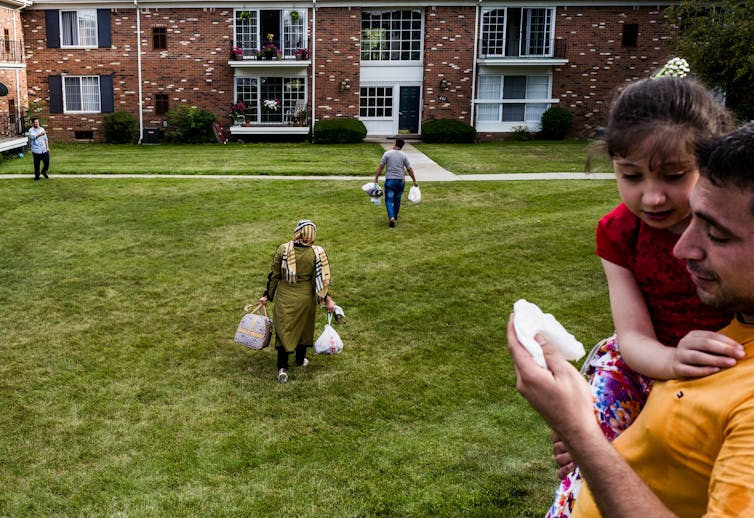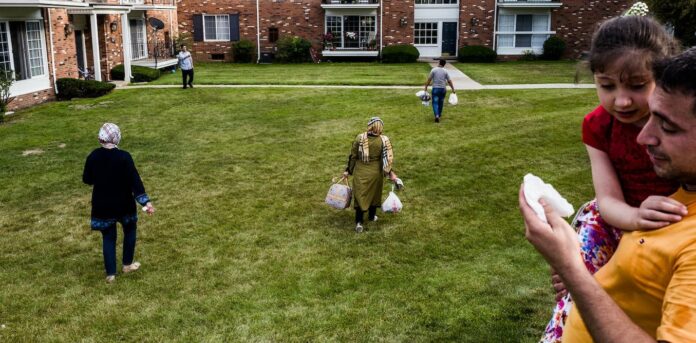3 myths about immigration in America

By April Nisan Ilkmen, Adler University
The U.S. is – and long has been – a pluralistic society that contains large immigrant communities.
Yet migration is an actively debated but poorly understood topic, and much of the conventional thinking and political rhetoric about migration are based on myths, rather than facts.
For these reasons, migration policies and strategies for easing acculturation – which refers to the psychological process of assimilating to a new culture – usually end up being ineffective.
I often work with immigrant populations in my job as a family therapist and as an acculturation scholar.
Here are a few of the most common misconceptions I come across in my work.
1. Immigrants don’t want to learn English
The U.S. is home to more international migrants than any other country, and more than the next four countries – Germany, Saudi Arabia, Russia and the United Kingdom – combined, according to 2020 data from the U.N. Population Division. While the U.S. population represents about 5% of the total world population, close to 20% of all global migrants reside there.
An overwhelming number of these immigrants are learning English, despite public perception to the contrary.
Immigrants and their children learn English today at the same rate as Italians, Germans and Eastern Europeans who emigrated in the early 19th century.
According to U.S. Census data, immigrant adults report having better English skills the longer they’ve lived in the U.S. And from 2009 to 2019, the percentage who could speak English “very well” increased from 57% to 62% among first-generation immigrants.
2. Immigrants are uneducated
Contrary to popular belief that immigrants moving to the U.S. have minimal education, many of them are well educated.
Over the past five years, 48% of arriving immigrants have been classified as highly skilled – that is, they have a bachelor’s degree or graduate degree. By comparison, only 33% of those born in the U.S. hold a bachelor’s degree or higher.
Moreover, the pursuit of higher education is valued and encouraged in immigrant communities, particularly those that arrived from collectivist societies, which are commonplace in the countries of South Asia. Immigrants from these places tend to prioritize the virtue of the learning process and the joy that comes from attaining an educational milestone.
That doesn’t mean highly educated immigrants can easily slide into high-paying jobs. Many of them find themselves working in menial jobs that don’t require a degree, and underemployment among highly educated immigrants remains a key issue in the U.S. today.

3. The best way to adapt is to embrace US culture
For decades, acculturation studies have highlighted the importance of immigrants’ embracing American culture. Policymakers, therapists and educators who offered services to immigrants adhered to a narrow understanding of acculturation, which encouraged immigrants to adapt to their host country by severing themselves from the culture of their homelands.
Then, in 1987, psychologist John Berry proposed an acculturation model outlining new strategies.
According to Berry, immigrants should strive to retain elements of their original cultural identity while also adopting a new cultural identity that folds in American culture and values.
Today, Berry’s model is the most commonly used to understand acculturation.
However, although the model acknowledges that acculturation strategies may evolve over time, it doesn’t take into account the emerging forms of transnational immigration, which refers to immigrants who live in another country but also maintain strong ties to their home country.
Technological advances have made it far easier for immigrants to maintain ties with their original culture. There are also U.S. cities, neighborhoods and towns where immigrant communities are the demographic majority – places like Hialeah, Florida, where Cubans and Cuban Americans make up 73% of the population, and parts of the Detroit metro area, which has growing numbers of Indian immigrants.
For immigrants living in these “immigrant islands,” there’s less of an obligation to undergo a transformative process of acculturation, whether it’s by Americanizing foreign names or not teaching children their home country’s language.
Still, many immigrants nonetheless feel pressured to downplay their backgrounds. While conducting interviews with members of the Turkish community in Chicago, I spoke with many people who admitted that they weren’t comfortable flaunting their Turkish culture. This didn’t surprise me. Immigrants are often exposed to new sets of prejudices and biases, and they fear not being able to access services such as medical care and education.
This fear reinforces the urge to assimilate into the dominant culture’s values – which, in America, includes individualist principles like independence – and suppress their own cultural values, such as being family-oriented. It’s essentially a strategy of self-protection.
In my work, I found that immigrants who engaged in what’s called “cultural innocuousness” – behaving in ways that may soften their ethnic and cultural expression – had the hardest time adapting to their new home.
For those reasons, it is crucial for social workers, therapists, teachers and policymakers who work with immigrant families to focus on the tensions among acculturation, ethnic identity and well-being.![]()
April Nisan Ilkmen, PhD Candidate in Couple and Family Therapy, Adler University
This article is republished from The Conversation under a Creative Commons license. Read the original article.



